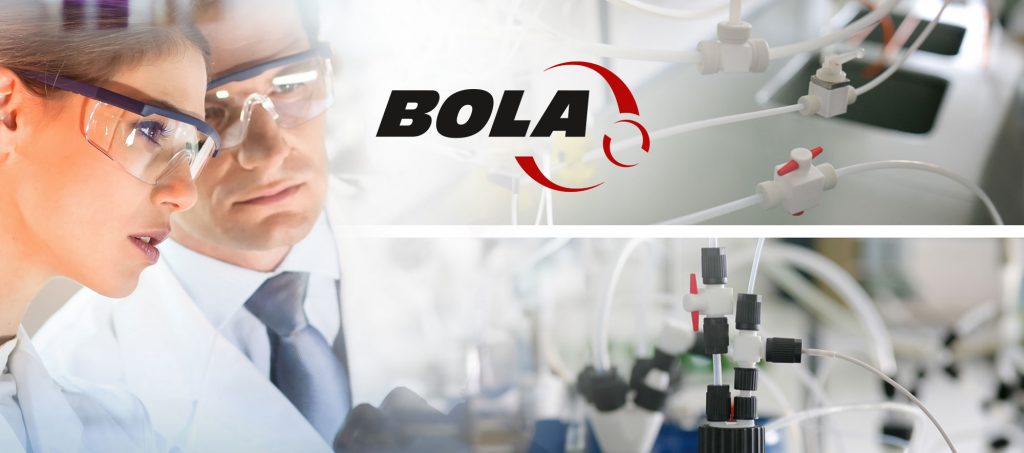Guidance from Bola and Labtex on how to clean BOLA products after use.
Fluoroplastics, PTFE, PFA and FEP have a smooth, non-wetting surface and can usually be cleaned without problems. Abrasive scouring agents may result in a milkiness of the vessels made of PFA and FEP. You may use all neutral detergents (pH 7). For higher levels of contamination, we recommend the use of an alkaline detergent up to pH 12.
Only clean or dry vessels in a laboratory washing machine when they are completely opened.
Cleaning and Re-Utilisation of Tubing
Fluoroplastic tubing should only be reused provided the material to be cleaned is known and rated with + in the chemical resistance chart. If the substances are unknown, the reuse of tubing cannot be recommended.
Appropriate detergents are all water-soluble substances (such as salts, acids, lyes, etc.).
After use with toxic, hazardous materials or substances which only can be removed by using organic solvents, the tubing should be professionally disposed of.
Autoclaving at +121 °C and 134 °C
Vessels made of PTFE, PFA or FEP can be sterilised using steam at +121 °C / 30 minutes respectively at 134 °C / 10 minutes. Dry sterilisation at +160 °C is also possible.
Autoclaving/sterilisation of closed vessels can destroy them. Sterilisation of vessels made of fluoropolymers with high-energy radiation, gamma radiation or electron radiation is not recommended.
Cleaning for Trace Analysis
To prevent contamination with cations or anions in trace analysis, the vessels should first be filled with an 1N HCL and HN03 solution. This solution should be left inside the vessels for max. 6 hours at room temperature then rinsed with clean distilled water.
Vessel surfaces can be cleansed by storing them for 24 hours in deionised water at +85 °C. In this case the vessels should be rinsed with deionised water.
Pressure Resistance of Bottles
Due to their thin walls, standard PTFE, PFA or FEP bottles should not be pressurised (from inside).
Plastics in Microwave Ovens
Fluoroplastics, with their high thermal resistance, are suitable for microwave energy. Fluoroplastic vessels are particularly suitable for heating of aggressive chemicals. However, the resulting vapours must be sufficiently drawn off.
Additionally, controlled drainage to a collecting vessel has to be arranged in case of a rupture to membrane in the digestion vessel. Other vessels or containers than digestion vessels may only be heated when open.
Fluoroplastics – Heating
It is difficult to heat PTFE due to its bad heat transmission and because the max. surface temperature must not be exceeded.
Heating mantle with surface sensor:
When heating with a heating mantle, a large surface of the vessel is covered. This supports the heat transmission and reduces the heating period. The mantle must have a sensor on its surface, to switch the mantle off upon exceeding +260 °C.
Heating by a thermostat:
The heat transmission is provided by the bath medium (oils or other liquids). Controlled by an adjusted thermostat, the temperatures on the surface of the PTFE vessel will not become too high.
Methods to avoid are:
- Direct flame (e.g. gas burner), as the surface temperature cannot be controlled
- Hotplate, where overheating could also occur.


